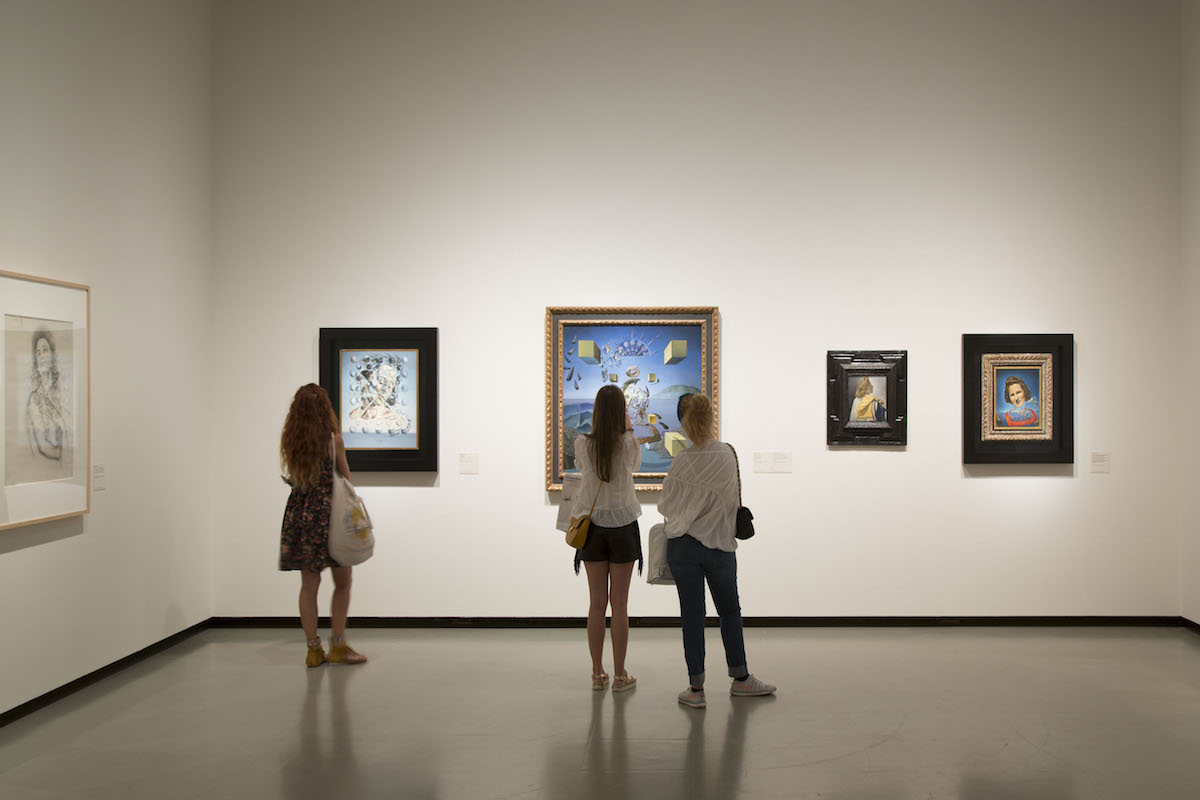Barcelona, city of art

Barcelona has always had a very close relationship with art, while creativity has always been a defining feature of the city.
Barcelona has a great art scene for emerging artists, “creation factories” that nurture them, a well-established art gallery sector, and a number of collectors that support it. Moreover, it is one of the few cities in the world that has a number of galleries set up by artists themselves to display their own work.
It is true that the city does not have an iconic museum like the Prado, the Louvre, the Metropolitan or the British Museum, but Barcelona has a network of dedicated museums that are home to the work of some of the greatest artists of the 20th century: Picasso, Miró, Tàpies and Dalí.
The year 2025 marks several important anniversaries for these museums; the Fundació Joan Miró was created by the artist in 1975 and will celebrate its 50th anniversary, while the Fundació Tàpies will celebrate the centenary of the birth of the artist Antoni Tàpies.
Barcelona es también la sede del Museu Nacional d’Art de Catalunya (MNAC) que tiene una de las mejores colecciones de pintura románica del mundo y que también alberga una admirable colección de arte gótico y barroco. El MACBA es un museo de arte contemporáneo ampliamente reconocido en la escena internacional; y el Centre de Cultura Contemporània de Barcelona (CCCB), que tiene una marcada personalidad catalana.
Collectors
This artistic ecosystem benefits from a specific characteristic: a growing number of patrons and private collectors who have preserved the city's artistic heritage. In a country with little tradition of public collecting, the museums have also been enriched by donations from the private sector.
The city is home to large private cultural centers, such as the CaixaForum, which receives 750,000 visitors a year, and relations with major international museums have enabled the city to obtain important loans from galleries such as the Louvre and the Prado, as well as works of art for Fundación MAPFRE and La Pedrera.
"The city has a series of monographic museums created by some of the most relevant artists of the 20th century: Miró, Picasso, Tàpies and Dalí."
The art scene in Barcelona has a number of “creation factories” that nurture emerging artists, as well as well-established commercial galleries, and a supportive group of collectors.
The city has a varied range of art galleries: from the most iconic, such as Sala Parés (the oldest in Barcelona) in Petritxol street, to the most recent galleries, such as Bombon Projects and Alalimón in Trafalgar street.
The city's galleries sell mainly to small collectors and art lovers who come to enjoy the exhibitions, learn about new forms of art, and experience first-hand the transformative effect of art.
"In recent years several artists and gallery owners have moved to L'Hospitalet, creating an artistic ecosystem in this area of Barcelona"
Consell de Cent street is the traditional home for galleries in Barcelona, but they are now moving, and the Chinese stores in Trafalgar street have recently been replaced by a whole selection of young galleries that have chosen the area for the low rents.
Sin embargo, en los últimos tres años, más de 200 artistas visuales han trasladado su espacio creativo desde el centro de Barcelona a L’Hospitalet. La suma de iniciativas y sinergias con la ciudad y sus centros de arte está consolidando un ecosistema artístico distintivo en el área metropolitana de Barcelona.
During 2014, the painters Pere Llobera and Rasmus Nilausen moved into an industrial building on Salamina Street and were joined by other artists. This was an unusual example of well-established artists seeking to combine their work space with activities by independent artists.
Salamina served as a model for the artists-in-residence who moved from the Hangar creative Factory in Barcelona to L'Hospitalet. Matteo Guidi, Marc Serra and Diego Pahonessa opened the Trama34 creation space in L'Hospitalet in 2016, which also houses the Nogueras Blanchard and Anna Mas Projects galleries in the same building. Hangar's latest group of artists-in-residence also decided to move to L'Hospitalet in 2018, to the FASE space in Carrilet avenue. Similarly, Antoni Muntades decided to move his studio-residence from El Born to Corominas street in L'Hospitalet.
International collaboration and new projects
All the art galleries in Barcelona had to close their doors between mid-March and the end of May, a very difficult time for an already vulnerable sector, and most had to cope with lockdown by generating initiatives to make their contents available online and contacting their public via social media.
Far from being beaten by the Covid-19 pandemic, the galleries have used new technologies to reach the international market and have set up interesting new collaborations with museums and art institutions abroad. They have also learned to create new types of interaction between artists, the public, and the galleries.







